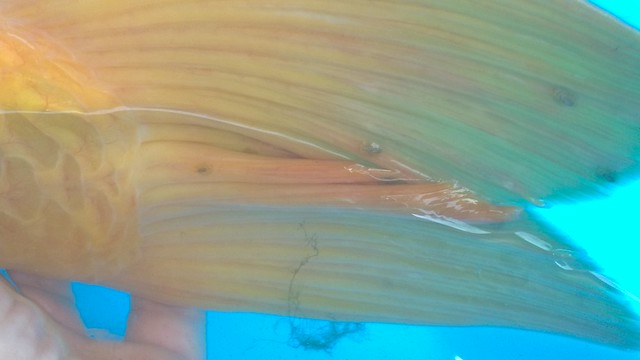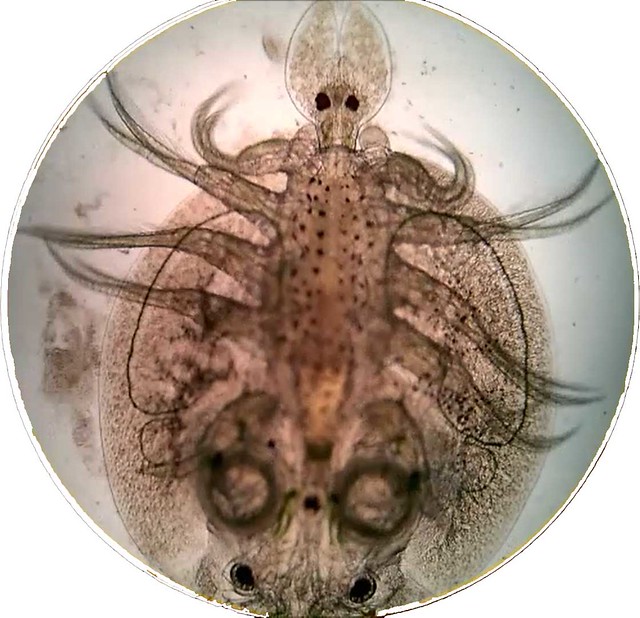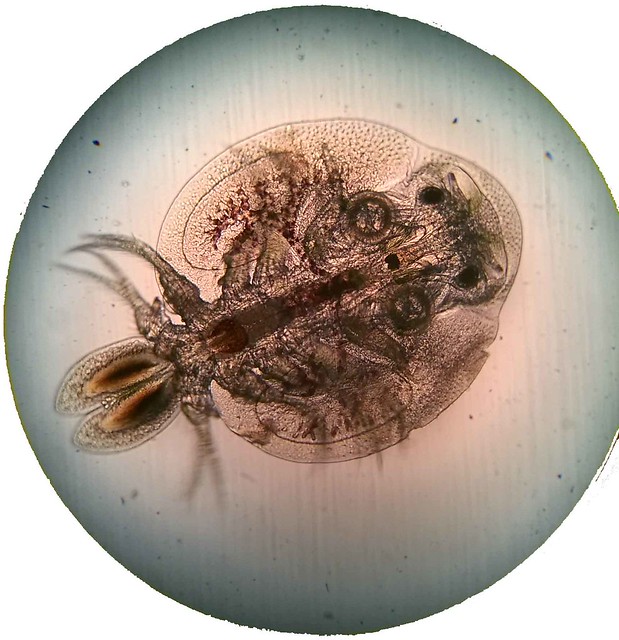Carp louse (Argulus folliaceus)
A striking feature of the carp louse is that it is a crustacean, a crustacean, while the name actually suggests otherwise. The name is misleading again because this parasite can also occur on other fish species.
Carp lice size
Because I am an avid angler myself (in addition to the koi hobby), I encounter these parasites more often while angling than in Koi ponds. After catching a wild carp, I regularly see a few specimens crawling. The fact that I see them crawling means that you don’t need a microscope for this parasite. They are between 3 and 12 millimeters in size. During the growth into an adult specimen, they molt a number of times because the shell does not grow with it.

The carp louse has a nasty sting between the eyes, with which it pierces the skin of the fish, then some poison is injected and blood is sucked up. Local red spots of irritation and also white spots on the skin or fins of the Koi can be a result of this. Sometimes scales even come loose, the fish can lose weight and become anaemic. The Koi will also try to get rid of the carp louse by sanding. All this can result in wounds with even inflammation, infections or fungal formation at a later stage.
Carp louse reproduction
Carp lice are oviparous. After they mate, the female gets off the fish to lay eggs, after which she dies. The yellow eggs are laid against the pond wall or between the plants. It can take a month for the eggs, about 300-500 pieces, to hatch. This is temperature-dependent. The larvae first swim around freely and only later do they look for a host fish. It takes two months (seven molts) for the offspring to reach sexual maturity.

Infection of the Koi pond with carp lice.
It is very possible that the carp louse piggybacks on newly purchased fish. Therefore, inspect new fish very carefully. Do not just take plants from nature or from another pond, because eggs can also be hidden in them. Giving live food is also a risk factor.
Treatment
Because carp lice can survive for three weeks without a host and the eggs are often resistant to pesticides, combating carp lice is quite difficult. If Koi carry one to two carp lice, there is no immediate danger. I would choose to remove it manually with tweezers. With several specimens, a fish will really suffer from the carp lice. It’s hard to tell when treating with a pesticide is a better option than just manual removal. There are antiworm agents that also work against crustaceans such as carp lice, but not all! So make sure you are well informed.
If you place a Koi in a bowl with salt, they are quite easy to remove manually.
Other fish also eat carp lice. Certainly a sunfish will actively hunt it.






